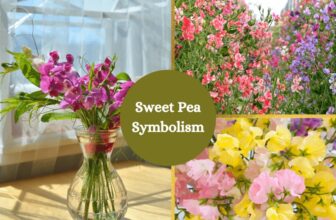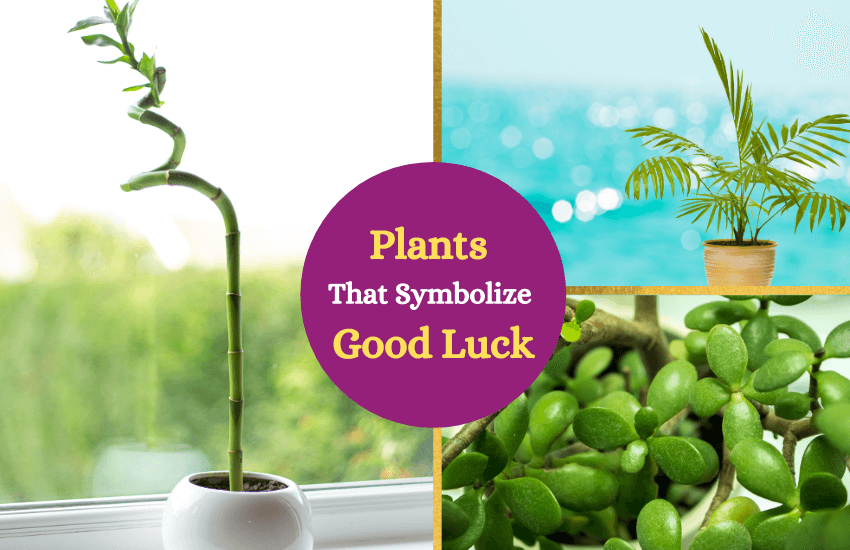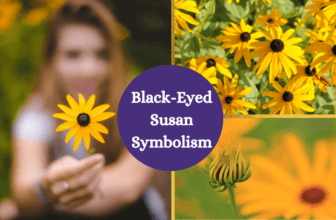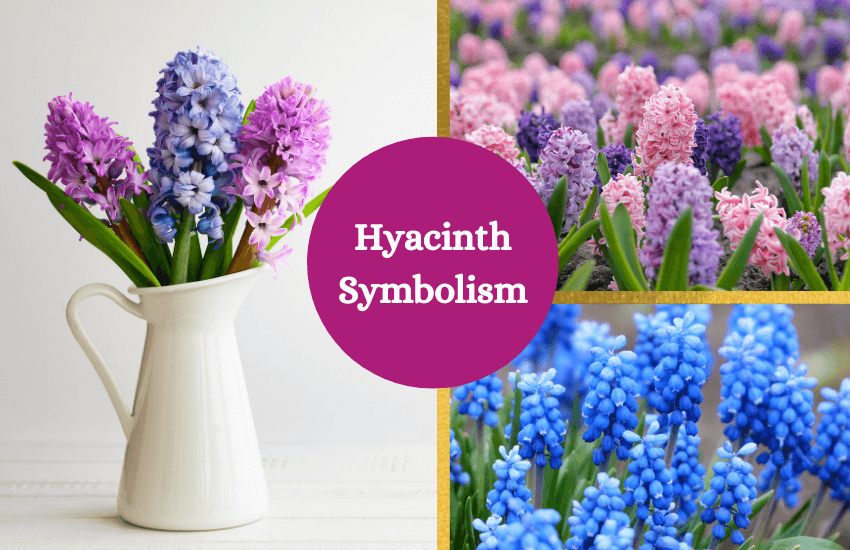
Table of Contents
A favorite of the spring garden, hyacinth is known for its beauty and stunning colors. Shaped like tiny bells, the hyacinth is favored for its scent and bright colors. Here’s a closer look at its history, symbolism, and practical uses today.
About the Hyacinth
Hyacinth is native to Turkey and southwestern Asia. It was introduced to Europe and first grown in botanical garden in Padua, Italy. As the story goes, a German physician called Leonhardt Rauwolf, who went traveling in search of herbal medicines, found the flower and collected it. Eventually, it became a popular ornamental flower in gardens.
Also known as Hyacinthus orientalis, the flower belongs to the Asparagaceae family. These blooms can be white, red, purple, lavender, blue, pink and yellow. Hyacinths grow from bulbs to a height of 6 to 12 inches tall, each producing flower clusters and long leaves. While the number of florets in each stalk will depend on the size of the bulb, large ones can have 60 florets or more!
Hyacinths commonly bloom for 2 to 3 weeks in mid spring, but do you know they can survive winter temperatures too? Unfortunately, the bulbs can only last about three to four years.
Meaning and Symbolism of Hyacinth
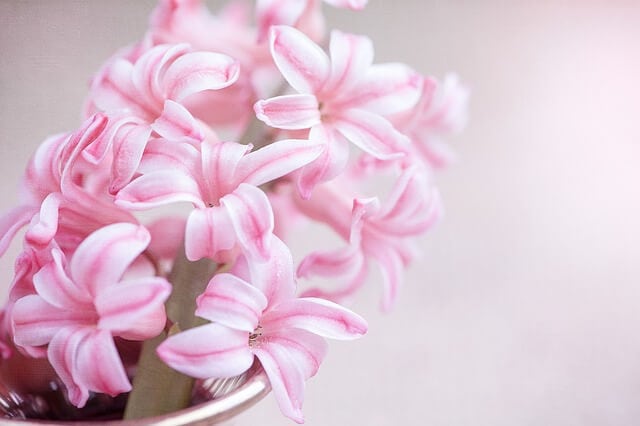
If you plan to give a bouquet of hyacinths as a gift, you might want to make sure it represents your message. The symbolic meaning of the flower is determined by its color. Here are some of them:
- White – beauty or loveliness
White hyacinths are sometimes referred to as Aiolos, a variant with luminous bright white color, as well as Carnegie or White Festival.
- Red or Pink – playful joy or harmless mischief
Red hyacinths are commonly called Hollyhock, though it’s more of a reddish-pink color. Fuchsia colored blooms are known as Jan Bos, while light pink hyacinths are sometimes referred to as Anna Marie, Fondant, Lady Derby, Pink Festival, and Pink Pearl.
- Purple – forgiveness and regret
Purple hyacinths with a dark plum color are called Woodstock, while ones with a rich purple hue is more known as Miss Saigon. On the other hand, lilac and lavender hyacinths are often referred to as Spendid Cornelia or Purple Sensation. Also, violet-blue flowers are named Peter Stuyvesant.
- Blue – constancy
Light blue hyacinths are commonly known as Blue Festival, Delft Blue, or Blue Star, while dark blue ones are called as Blue Jacket.
- Yellow – jealousy
Hyacinths with a buttery yellow hue are e known as City of Harlem.
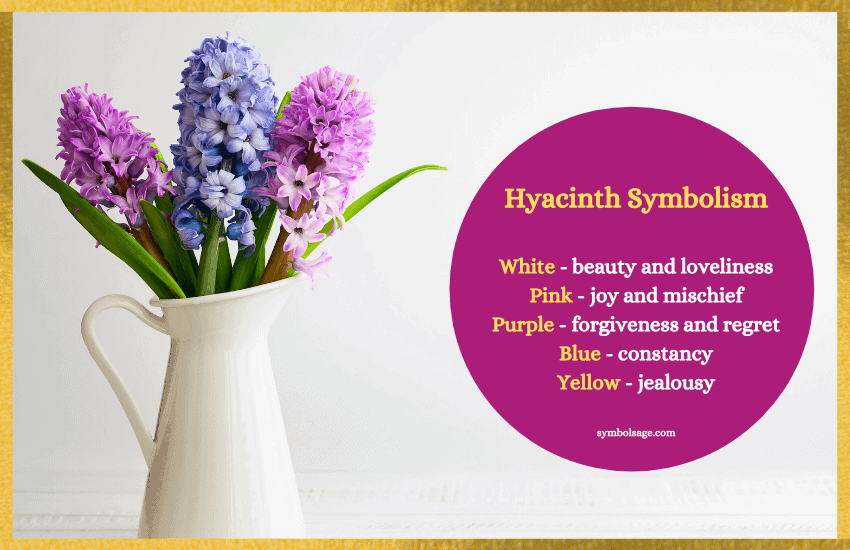
Uses of the Hyacinth Flower
Throughout history, the hyacinth has been used for different purposes, and has also been widely represented in arts.
- In Medicine
Disclaimer
Not to be confused with hyacinth beans and water hyacinth, the bulbs of Hyacinthus orientalis contain oxalic acid that are poisonous and can cause skin irritation. However, some have claimed that dried and powdered roots have styptic properties, which can be used to stop the bleeding of the wound.
- In Magic and Rituals
Some believe in the magical properties of the flower, using its scent and dried petals as an amulet, in hopes of attracting love, happiness, peace, and abundance, as well as relieving the pain of grief. Some even place a hyacinth flower on their nightstand to get a more restful sleep and ward off bad dreams. There are also hyacinth based soaps, perfumes, and bathwater used in the rituals.
- In Literature
Do you know the role of garden and flowers, especially hyacinths were of central importance in Persia? It was mentioned in Shahnameh (The Book of Kings), an epic Persian poem written in 1010 by Ferdowsi, the national poet of Iran.
- In Decorative Arts
During the 15th century in Turkey, ceramics featuring hyacinth motifs were widely used in the kitchens and court of the Ottoman Empire. Most jars, carafes, and bowls were influenced by Turkish countryside gardens as well as medieval herbs from Europe.
The Hyacinth Flower in Use Today
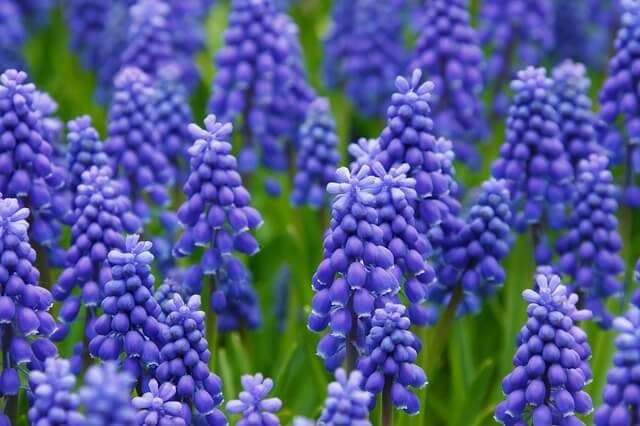
Nowadays, hyacinth is used in gardening, celebrations, as well as a gift, especially in countries that have a strong culture of flower giving. Some have hyacinths in their gardens, from pots to beds and borders, in hopes of relieving winter sickness. In Russia, hyacinth bouquets are usually gifted on Women’s Day, along with other spring flowers.
In weddings, white and blue hyacinths are often seen in bridal bouquets, representing beauty and constancy, as well as on flower arrangements and centerpieces. During the Christmas season, hyacinths are usually grown to decorate homes. Also, the hyacinth has a huge role in Nowruz, the Persian New Year, where it’s used in the celebration.
In some cultures, purple hyacinths are given as a token of apology. The purple-hued flower expresses forgivenes and mercy, which is best to combine with white hyacinth to represent the beauty of forgiveness.
Myths and Stories about the Hyacinth
In Greek mythology, Zeus is said to have slept on a bed of hyacinths. Because of this, the elaborate gardens of Greece and Rome during the 5th century featured hyacinths, especially the villas of aristocrats of Imperial Rome.
Also, the Greek myth of Hyacinthus tells us how the flower got its name. Hyacinthus was the boy whom god Apollo had loved, but accidentally killed him when they were playing quoits. He was struck by a discus on the head and fell to the ground. As he died, the drops of his blood turned into a hyacinth flower.
In Brief
Hyacinth is a flower bulb that produces beautiful, highly scented blossoms, which are commonly found in spring gardens. It’s rich symbolism helps to express all kinds of emotions and heartfelt gestures, such as forgiveness, beauty, playful joy, and constancy.





